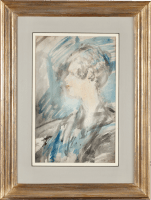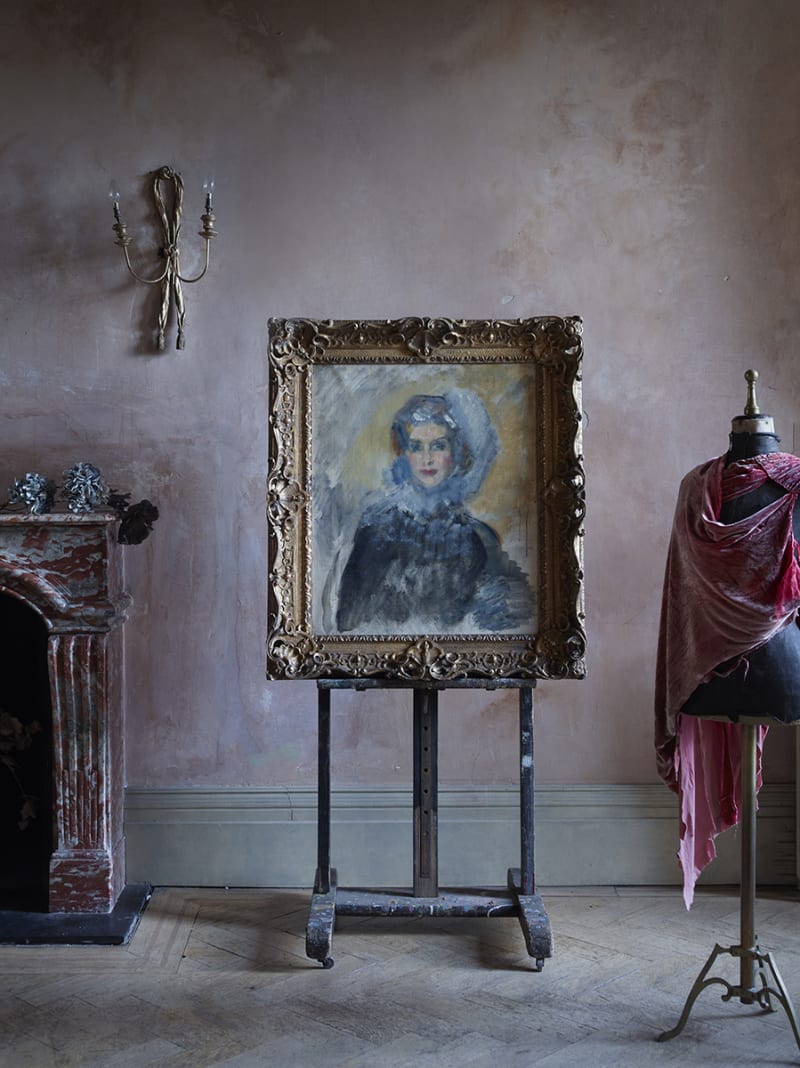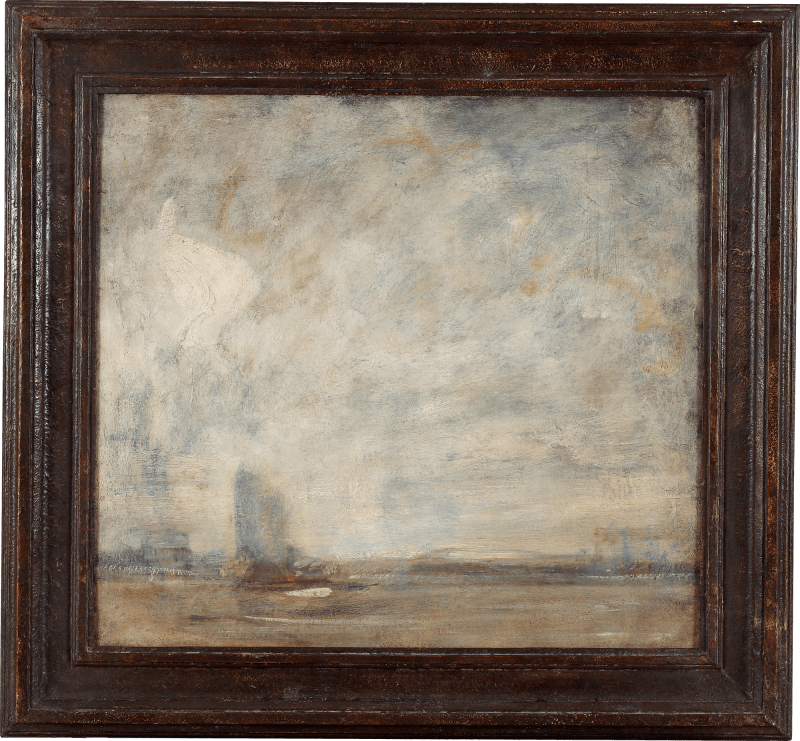Vibrant strokes of bold watercolour dance across this portrait of an unknown woman. McEvoy’s unique approach to watercolour is evident in this portrait. He experimented often with ‘scumbling’ the whole picture thinly over with white so that forms and features were still discernible. He would later ‘find’ them again by picking out certain details; in this case the bright lips of his sitter.
Depicted in profile, the figure’s short haircut is a marker of the energetic flapper age in which McEvoy was working and he appears to embrace this vitality with open arms and a loaded paintbrush. His rapid and loose a series of saturated strokes seem to reflect the dynamism and energy of the era.
Biography
Ambrose McEvoy demonstrated his exceptional artistic abilities from a young age. Encouraged by his father, Captain Charles Ambrose McEvoy, and inspired by his father’s great friend, James Abbott McNeill Whistler, McEvoy enrolled at the Slade School of Fine Art at...
Vibrant strokes of bold watercolour dance across this portrait of an unknown woman. McEvoy’s unique approach to watercolour is evident in this portrait. He experimented often with ‘scumbling’ the whole picture thinly over with white so that forms and features were still discernible. He would later ‘find’ them again by picking out certain details; in this case the bright lips of his sitter.
Depicted in profile, the figure’s short haircut is a marker of the energetic flapper age in which McEvoy was working and he appears to embrace this vitality with open arms and a loaded paintbrush. His rapid and loose a series of saturated strokes seem to reflect the dynamism and energy of the era.
Biography
Ambrose McEvoy demonstrated his exceptional artistic abilities from a young age. Encouraged by his father, Captain Charles Ambrose McEvoy, and inspired by his father’s great friend, James Abbott McNeill Whistler, McEvoy enrolled at the Slade School of Fine Art at the age of sixteen.[1] The young McEvoy established himself as a gifted genre painter; he explored rolling landscapes and intimate interior scenes whilst attracting attention from wealthy patrons and collectors, even at this early stage in his career.
During the mid-1910s, McEvoy ventured increasingly towards portraiture and the demand for his portraits rose concurrently. However, as with many artists, his career was interrupted by the First World War and in 1916 he was attached to the Royal Naval division and posted to the Western Front and the North Sea.[2] Following the horrors of this experience, his artistic zeal continued and he painted a series of portraits of naval officers and highly decorated lower-ranked soldiers.[3]
On his return, McEvoy was heralded as one of the most successful English society portrait painters of the early 20th century. His innovative style and florid methods endeared an emerging generation of young, wealthy and liberal-minded patrons. His famed depictions of human character and beauty, particularly of women, became sought after and he maintained an illustrious list of clients spread between the United Kingdom and America, where he was represented for a period by the most celebrated international art dealer of the day, Lord Duveen.[4]
However, this youthful success was to take its toll on McEvoy and he died in 1927, aged forty-nine. Critics writing shortly after his death were in little doubt as to the significance of his work; ‘the most refined aspect of early twentieth century society will live on in his work, and that alone ensures his position in history’.[5]
To this day, he has become famed for his depiction of women. In his obituary in The Times he was praised for his ability to paint female subjects in a manner that was both visually appealing, but also bespoke the profundity of his ‘thoughts about human beauty, particularly feminine beauty’.[6]
[1] E. A. Akers-Douglas, (ed.) L. Hendra, Divine People: The Art & Life of Ambrose McEvoy, (London: Paul Holberton Publishing, 2019) p.28.
[2] Akers-Douglas, (ed.) Hendra, Divine People, p.24.
[3] For more information on his portraits of officers, see Chapter 7. A Painter of Heroes in Akers-Douglas, (ed.) Hendra, Divine People.
[4] Akers-Douglas, (ed.) Hendra, Divine People, p.176.
[5] “Ambrose McEvoy”, Country Life, vol. 13, issue 1619, 28th January 1928, p. 106.
[6] "Mr. Ambrose McEvoy." The Times (London), 5th January 1927, p. 12.











